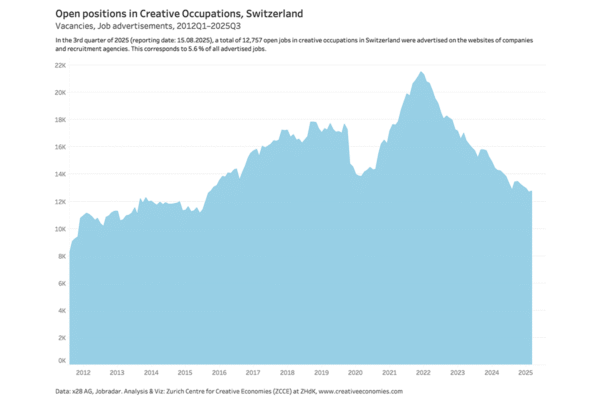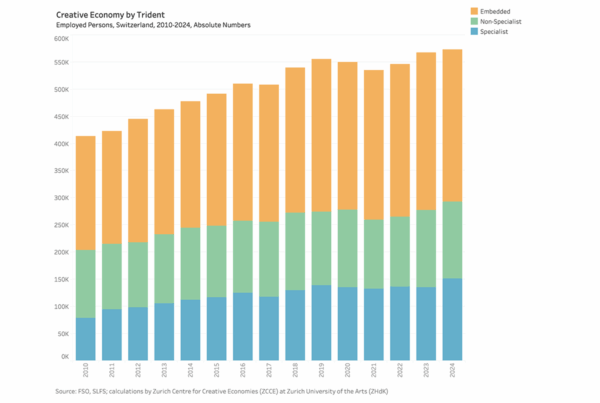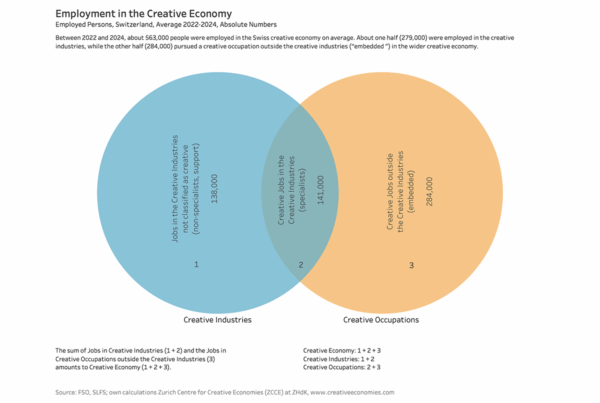The figures show employment in the Swiss creative economy in the period 2018–2020 and the average of these three years.
Between 2018 and 2020, about 548,000 people were employed in the Swiss creative economy on average. About one half (275,000) were employed in the creative industries, while the other half (273,000) pursued a creative occupation outside the creative industries (“embedded ”) in the wider creative economy.
Methodology:
This statistical analysis approaches the Swiss creative economy from the perspective of economic activities and occupations.
The Dynamic Mapping methodology, originally applied by Nesta to classify the creative economy, consists of three stages. First, a set of occupations is identified as creative. Second, the workforce intensity of these occupations is calculated for each industry. Third, based on the distribution of creative intensity across industries, a threshold intensity is identified, above which all industries are determined to be creative for measurement purposes, while those below the threshold are not. Finally, creative economy employment is estimated according to the Creative Trident approach.
Based on the classification for creative occupations and industries according to the UK’s DCMS and innovation foundation Nesta, we estimate the size of the Swiss creative economy employment using the Swiss Labour Force Survey (SLFS).
Creative economy employment is given by the sum of creative industries (specialists + non-specialists) employment and all creative jobs in other industries (embedded). The creative economy thus consists of three types of employees:
1. Non–specialists (support): employed persons working in a creative industry, but who are not themselves employed in a creative occupation, for instance, a bookkeeper at a publishing company.
2. Specialists: persons working in creative occupations in creative industries, for instance, a dancer in an ensemble or a journalist writing for a daily newspaper.
3. Embedded: persons working in creative occupations outside the creative industries, for instance, a game designer working in financial services.
Further information in our Creative Economies Reports and in the Research Notes.






13 Comments